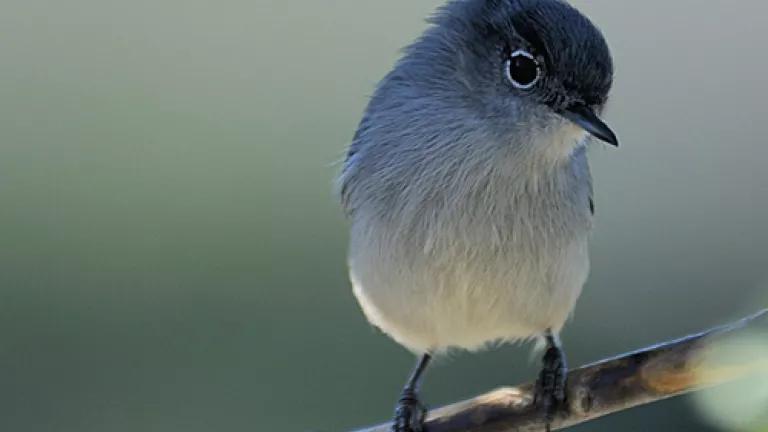
The coastal California gnatcatcher - a small bird that dines on insects and mews like a kitten - lives in the distinctive coastal sage scrub habitat of southern California. This habitat, much like the bird, is highly endangered in the US having been reduced by 70-90% over the last several decades due largely to development. As a result, the Coastal California gnatcatcher has also declined and in 1993 the gnatcatcher was added to the federal Endangered Species Act list. Nonetheless, every couple of years or so developers like the National Association of Home Builders and the Pacific Legal Foundation petition to have Endangered Species Act protections removed from gnatcatcher by claiming that the bird is not distinguishable from similar birds farther south in Baja California.
Most recently, these developers filed a petition to remove Endangered Species Act protections from the gnatcatcher based on a new genetic study - which they paid for. This is the second such study that they claim demonstrates that the Coastal California gnatcatcher is not a valid subspecies. And it's the second one that fails to do so.
First of all, much like their initial study, this one by Zink et al. relies on slowly evolving gene regions that would not be expected to demonstrate differences at the subspecies level. In fact the authors themselves have previously argued against using the very type of genes that they used for this study. Furthermore, despite the fact that these genes would not be expected to show differentiation below the species level, a subsequent reanalysis of the authors' own data by another research team shows that 2 of the 7 genes actually do differentiate the coastal California gnatcatcher from other gnatcatchers to the south suggesting a genetic basis for their distinction even without using more informative genetic data.
Second, the Zink et al. study claims to use ecological niche modeling to show that gnatcatchers are habitat generalists and therefore the coastal California gnatcatcher is not uniquely adapted to the coastal sage scrub environment. They acknowledge that the coastal California gnatcatcher "occupies the distinctive CSS habitat in the north" and that they "do not have identical niches" to the gnatcatchers to the south, but they argue that when the backgrounds of each environment are taken into account that the two groups "do not exhibit significant niche divergence." However, here the authors simply misinterpret their own results. Rather than demonstrating a lack of niche divergence their analysis is inconclusive - that is, the analysis cannot determine whether there is niche divergence or not likely due to the type of data they used for their model. Zink et al. relied on climatic data that are inherently limited for detecting spatial differences and do not necessarily reflect aspects that are biologically important to the species - a point which the authors' concede.
In short, once again the developers have tried to claim that the coastal California gnatcatcher is not a subspecies and once again they have failed. The best available science continues to support the coastal California gnatcatcher as a subspecies that has been recognized for almost a century. Nonetheless the US Fish and Wildlife Service is currently evaluating the groups' petition as they have in the past. Each time the US Fish and Wildlife Service has confirmed the status of the coastal California gnatcatcher and its need for continued protections. They should do so again.
Photo courtesy of U.S. Fish & Wildlife Service.

